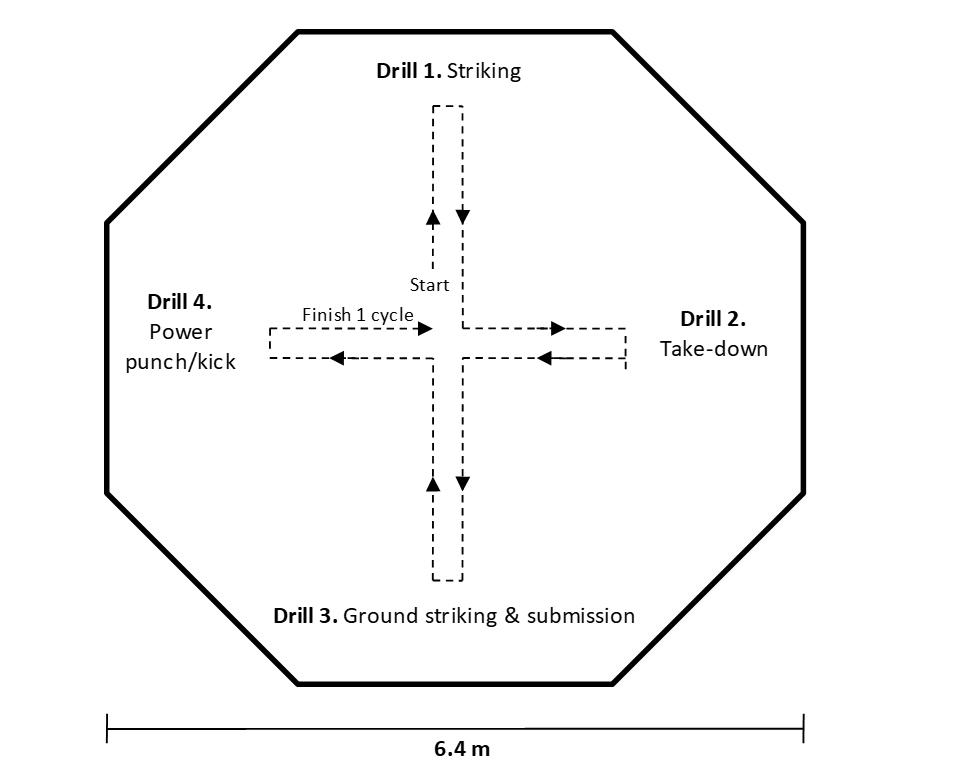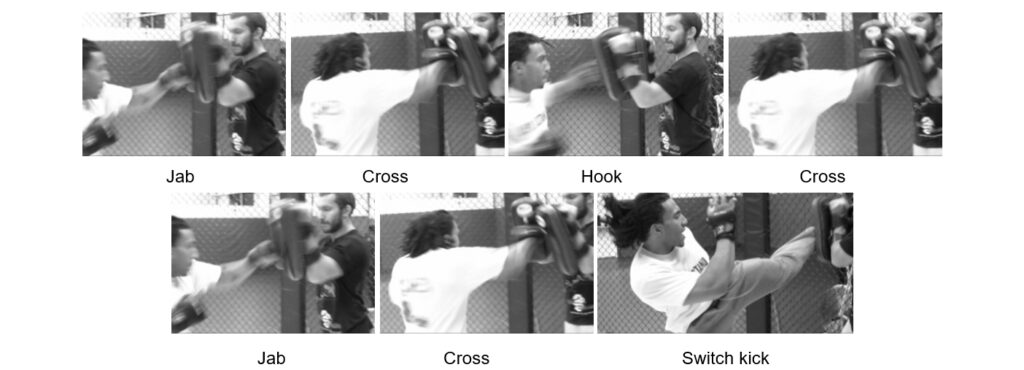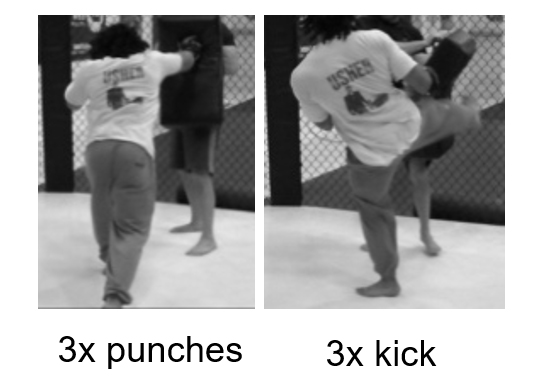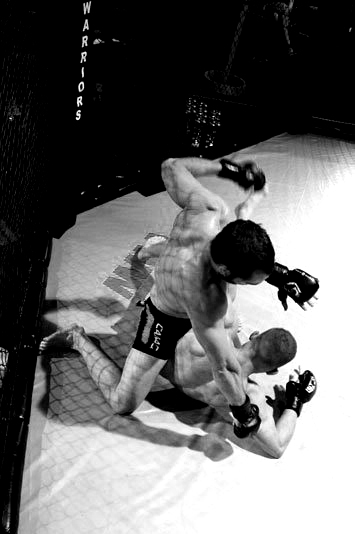Regular performance testing is a critical, yet often overlooked part of an effective MMA training program. A good program of performance testing can help you monitor your adaptation to training, which can help you identify whether you’re overtraining or undertraining. It can help you identify strengths and weaknesses and create training objectives; and it can help to classify your skill status and ability level. The purpose of this article is to describe a sport-specific test that can help you monitor specific MMA-performance factors.
You should also note that this article is part of a series focused on performance testing for fighters in MMA. The first article in the series outlined the fundamentals of performance testing, so start reading there if you’ve not already. The second article introduced a few sports psychology tests. The third article showed you how to measure body size and composition. The fourth article covered tests of muscular power and the fifth article showed you how to test muscular strength. The sixth article showed you how to assess muscular endurance. The seventh laid out performance tests for aerobic and anaerobic endurance. OK, let’s delve into MMA-specific performance testing.
The fighter’s drill
The fighters drill attempts to replicate the demands of a typical bout of MMA by having fighters repeat four MMA drills back-to-back, in a self-paced manner, for three, five minute rounds, with one minute rest between each round.
You will require a large area, preferably a cage, one 40 kg grappling dummy, stop watch, a counter, and two experienced pad holders.
 Schematic of the MMA-Specific test: The Fighter’s Drill
Schematic of the MMA-Specific test: The Fighter’s DrillThe fighter will always start in the centre of the cage, facing towards drill 1, in a fighting stance. They will make their way through the four drills back-to-back, in a self-paced manner, for 5 minutes (round 1), then rest for 60 s. Two additional 5 minute rounds will follow the same sequence with 60 s of rest between each round. The test will last 17 minutes (3 x 5 minute rounds, with 2 x 60 s of rest after rounds 1 and 2).
Performance will be assessed by the total number of drills completed during each 5 minute round, and over the entire test. Heart rate (beats/min) can also be recorded throughout the entire test.
The 4 sport specific drills are listed below:
Drill 1. Striking combinations
The fighter will start from the centre of the cage, in a fighting stance, facing an experienced pad holder. At their own pace they will approach the pad holder and perform a jab-cross-hook-cross combination, followed by a jab-cross-switch-kick combination.

Drill 2. Take-down
After drill 1, the fighter immediately returns to the centre of the cage in their fighting stance, facing towards drill 2. At their own pace they will perform a penetration step and pick up a 45 kg grappling dummy that is balanced in a standing position about 1 m from the cage wall. After picking up the dummy, it is carried and pinned against the cage (or wall). Whilst maintaining a body hold, the fighter then performs a suplex that sends the grappling dummy to the ground.

Drill 3. Ground based striking & submission
After drill 2, the fighter immediately returns to the centre of the cage in their fighting stance and faces towards drill 3. At their own pace, they mount the grounded grappling dummy and perform 5 x punching strikes to the head region and an arm-bar submission on right limb. They immediately re-mount the grappling dummy and perform 5 x elbow strikes to the head region, then perform arm-bar submission attempt on the left limb.

Drill 4. Maximal effort striking
After drill 3 the fighter immediately returns to the centre of the cage in their fighting stance, facing towards drill 4. They start the drill at their own pace by performing 3 x rear-hand maximal punches followed by 3 x rear leg maximal kicks.

Below is an example of how the data from the fighter’s drill can be collected.

Download the MMA Training Bible’s data collection book here. This will allow you to record your data and chart your progress on this test and all of the other tests described in this article series.
Take Care,
Dr. Gillis

Leave a Reply